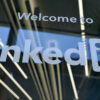Email Marketing
Key Pricing Strategy For Launching New Products & Services
Pricing a new product or service can be tricky. Price too low, and profitability suffers; price too high, and sales might drop. The goal is to find a balance where your price supports a healthy profit margin while still being attractive to your target customers.
Here are ten pricing strategies to help you achieve this balance:
Pricing Strategy #1: Economy Pricing
Economy pricing focuses on setting the lowest possible price, aiming to sell a high volume to make up for lower profit margins. This works well for basic, low-cost products where customers are price-sensitive, like generic grocery items or certain Walmart products.
Pricing Strategy #2: Cost Plus Markup Pricing
This strategy involves calculating the cost to produce a product or service and adding a fixed percentage markup. Often used for custom projects or government contracts, this strategy is common in industries like construction and custom clothing.
Pricing Strategy #3: Competitive Pricing
Competitive pricing means setting your price based on competitors’ rates, often slightly lower. This approach is best for products with little differentiation, requiring efficiency in manufacturing, storage, or marketing to keep costs low and stay competitive. However, your advantage may be temporary, as competitors can adopt similar tactics.
Pricing Strategy #4: Penetration Pricing
Penetration pricing involves setting a very low price—sometimes even at a loss—to gain market share, with plans to raise prices later. Many tech startups use this approach to grow quickly, but it can be challenging to achieve profitability, as seen with companies like Uber and DoorDash.
Pricing Strategy #5: Price Skimming
In price skimming, you launch a product at a high price, gradually lowering it over time. This strategy works well for established companies with loyal customers willing to pay a premium initially. However, if unfamiliar with your brand, customers may resist paying the high initial price.
Pricing Strategy #6: Bundle Pricing
Bundle pricing combines multiple products into a single package, offering convenience and often a slight discount. For instance, grocery stores may sell “kits” of ingredients for popular dishes. This approach works when bundling creates a complete solution for a customer need.
Pricing Strategy #7: Performance-Based Pricing
With performance-based pricing, you charge based on results rather than the service itself. This works well when results are easy to measure, like ad campaign profits or sales conversions. However, this setup makes your relationship with clients feel more like a partnership, so choose clients wisely.
Pricing Strategy #8: Value-Based Pricing
Value-based pricing is about setting a price based on perceived value, considering brand, industry, social proof, and product quality. Building a strong brand and delivering quality can allow you to charge more, as customers view your product as worth the price.
Pricing Strategy #9: Premium Pricing
Premium pricing positions your product as high-end, with a price tag to match. Customers often equate price with quality, so if executed well, this can enhance perceived value. Brands like Apple use this strategy effectively, charging a premium by targeting affluent demographics.
Pricing Strategy #10: Promotional Pricing
Promotional pricing offers discounts for a limited time, common during product launches, Black Friday, and other seasonal sales. While effective at boosting sales volume, frequent discounts may encourage customers to wait for a sale. This approach might conflict with premium pricing if overused.
A Key Skill: Mastering Copywriting
Even with the right pricing, you need effective copywriting to communicate your product’s value to potential customers. Clear, compelling copy helps convert interested customers into buyers. Jim Edwards’ book Copywriting Secrets offers great insights on crafting persuasive messages. You can find it on Amazon or get a free copy from his website by covering shipping.
Finding the right pricing strategy and honing your messaging can make all the difference in successfully selling your product.
>>>Join The One Funnel Away Challenge<<<






























